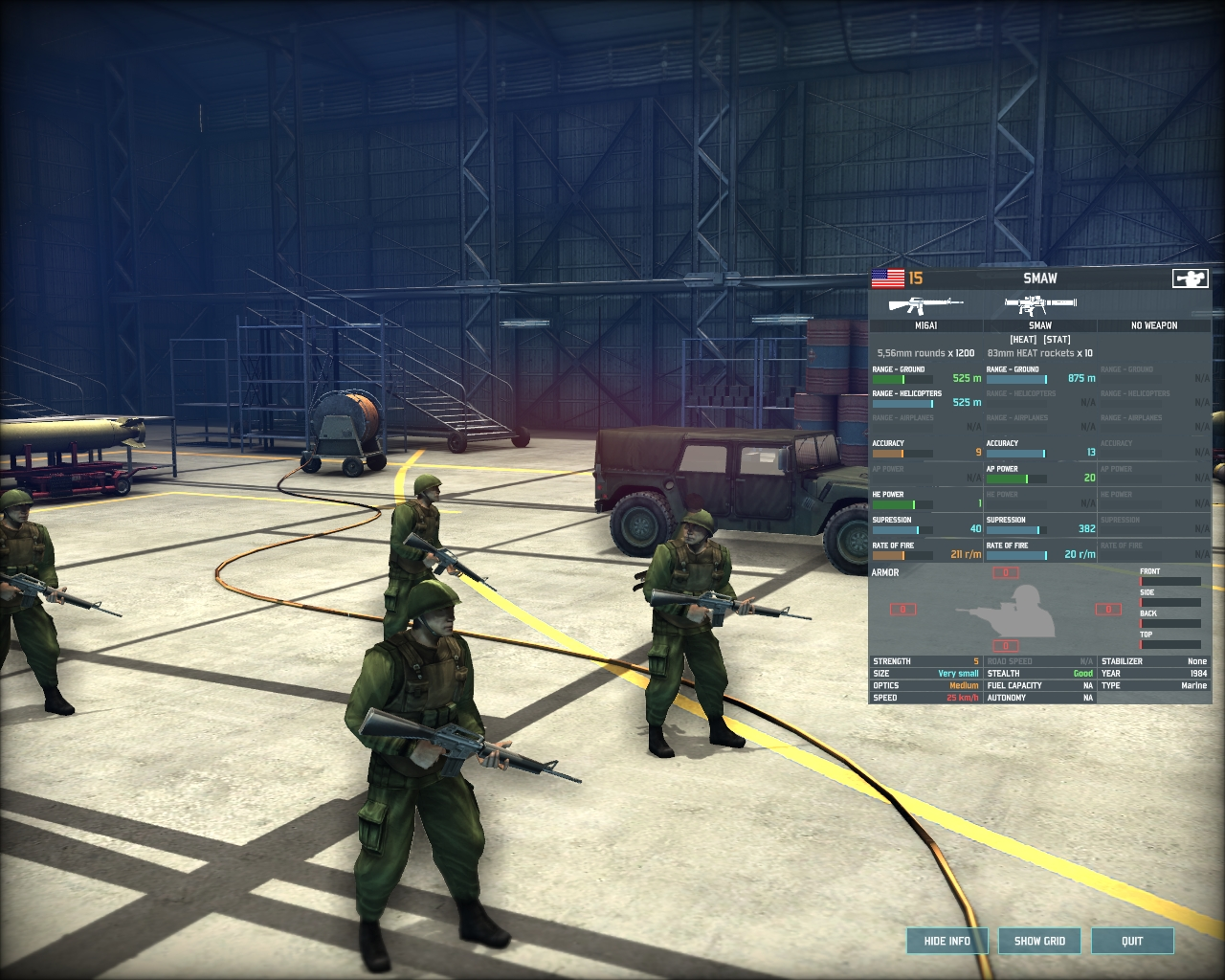

The F-15A Eagle is largely unchanged in Wargame: Red Dragon. This is not a problem for the later F-15C, which uses the active AIM-120 AMRAAM. This closure can put the aircraft within range of an opposing fighter's short-range fire and forget missile compliment, and can lead to the loss of the F-15, even if the F-15 shoots down its target. Because the AIM-7 is a semi-active missile, the F-15A must continue closing with its target once the missile has been fired. It is not without its drawbacks, however, largely found in the AIM-7 Sparrow missile.

The F-15A can take on any threat fighter with its combination of weapons, fair ECM, good speed and small turning circle. The Vulcan cannon also allows the F-15A to perform strafing runs at ground targets. It carries the medium-range, semi-active Sparrow missile, the all-aspect short-range AIM-9L Sidewinder, and a 20mm Vulcan cannon. The F-15A Eagle is an air superiority fighter with a weapons compliment allowing it to engage enemy fighters, bombers, and helicopters at medium to close range. These were used in Fighters Squadrons in the USAF. The Eagle first flew in July 1972, and entered service in 1976. Following reviews of proposals from the second set of RFPs initiated in August of 1967, the United States Air Force selected McDonnell Douglas' FX design on 23 December 1969 to meet the service's need for a dedicated air superiority fighter.
Wargame red dragon vs airland battle series#
In 19, the United States Air Force issued a series of Request For Proposals (RFPs) for their Fighter-Experimental (FX) program. It is considered among the most successful modern fighters, with over 100 aerial combat victories with no losses in dogfights. The McDonnell Douglas F-15 Eagle is a twin-engine, all-weather tactical fighter designed by McDonnell Douglas to gain and maintain air superiority in aerial combat.


 0 kommentar(er)
0 kommentar(er)
